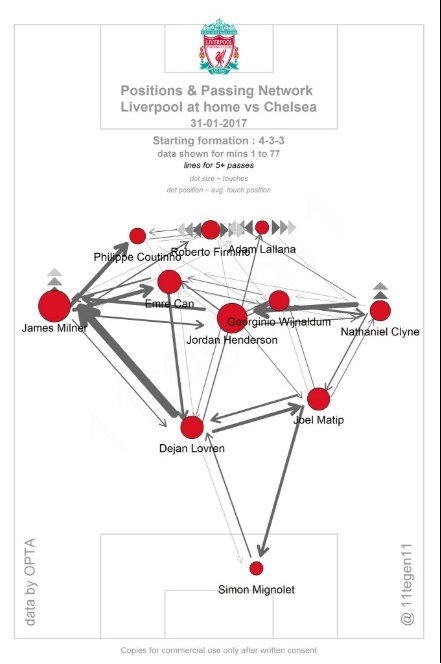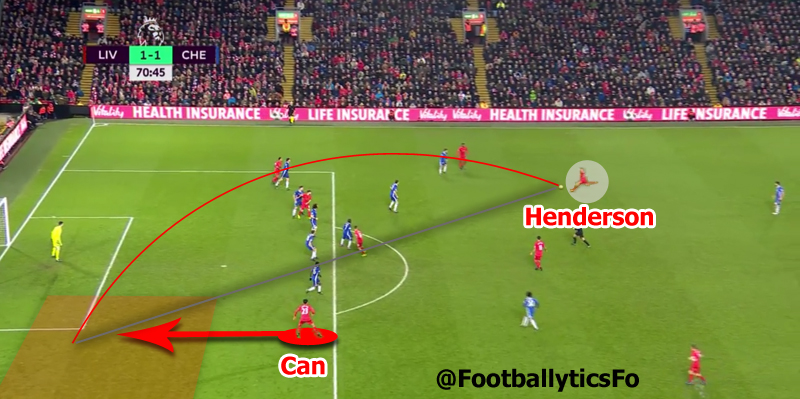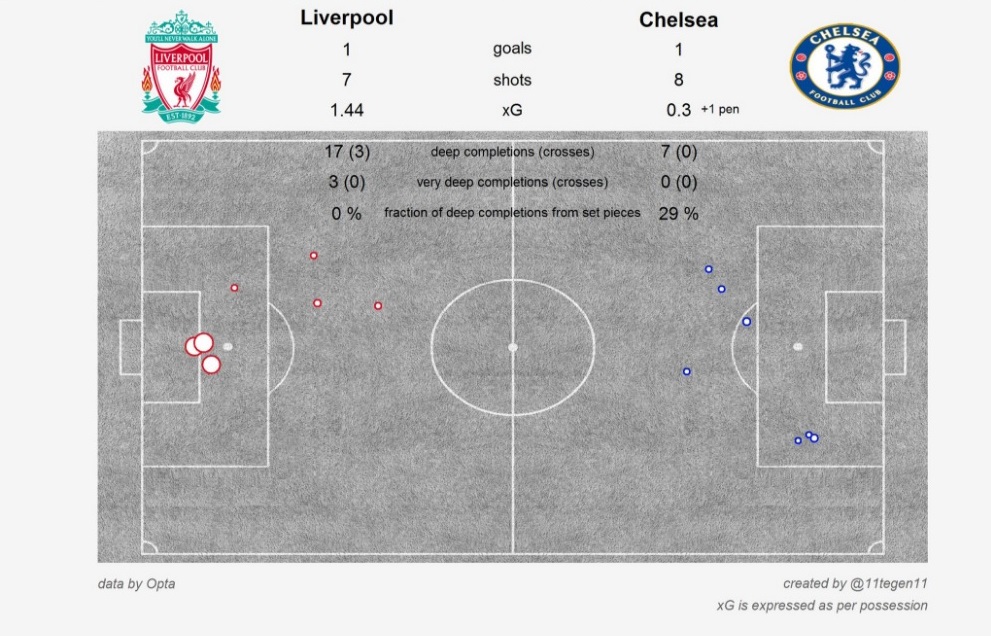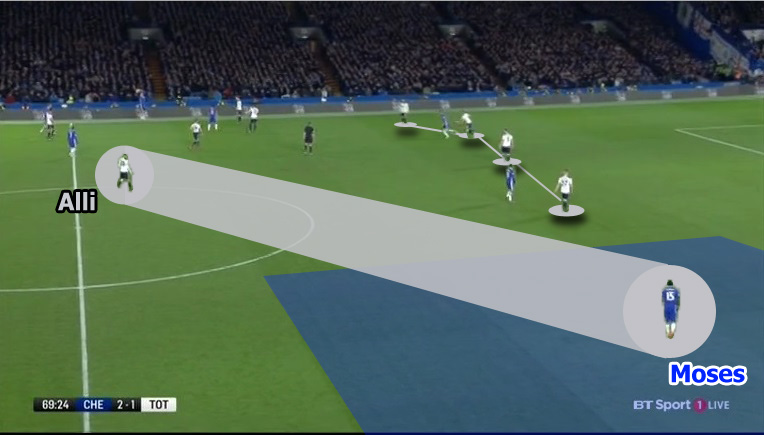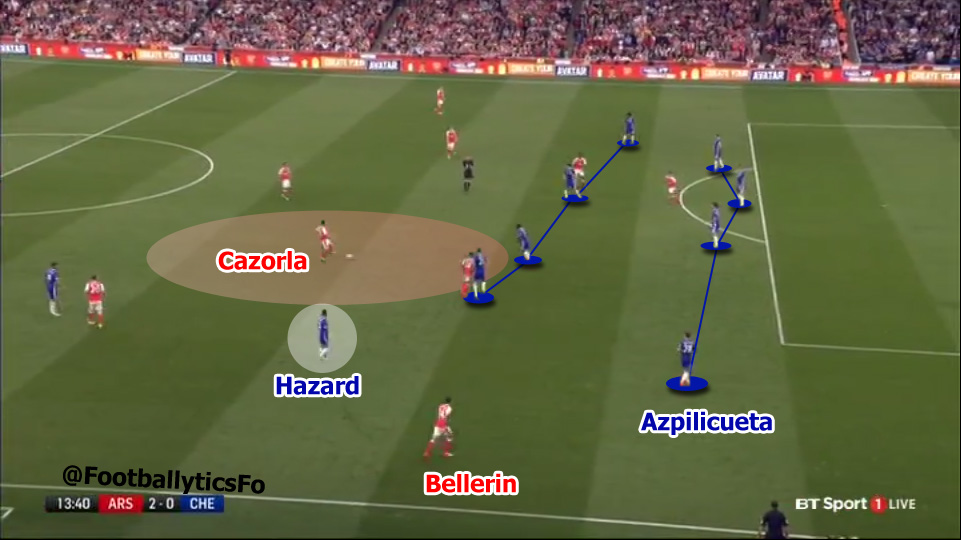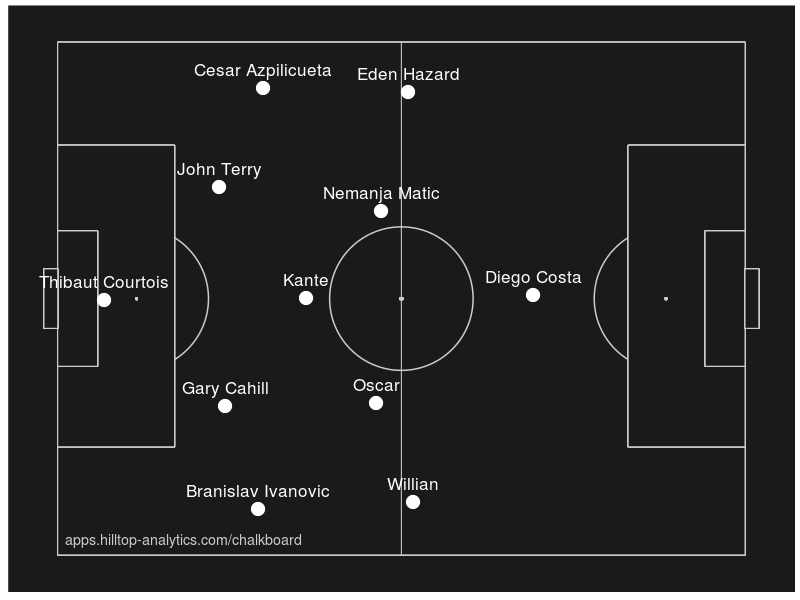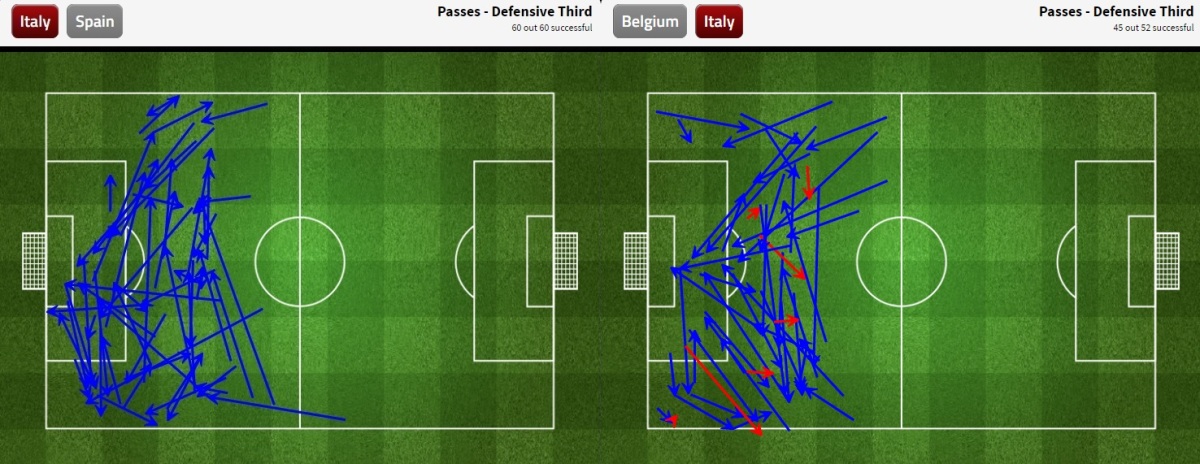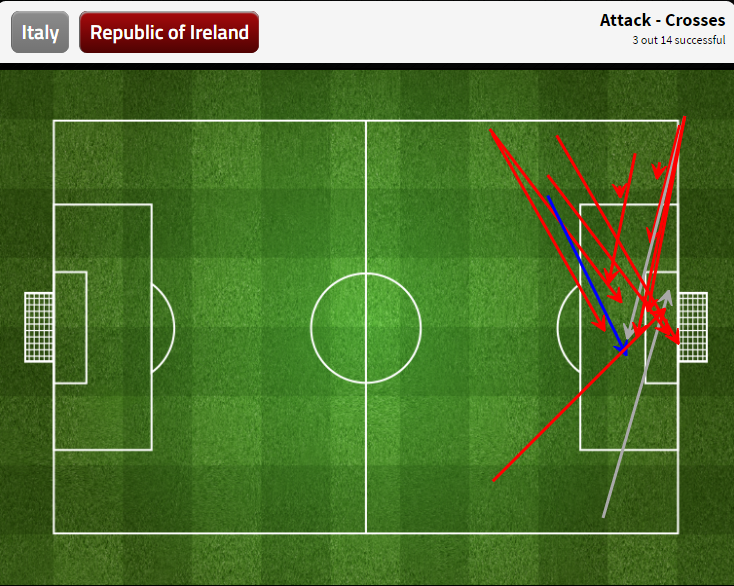Last time Arsenal and Chelsea met, The Blues were in middle of the table and eight points behind Manchester City at the top. The final third of that match saw Chelsea three goals down as Conte introduced 3-4-3 formation and never looked back again. That was the end of September and, after yesterday return clash with Arsenal, The Blues are running away with the title.
Coming to Stamford Bridge Arsenal had to win the game in order to keep themselves in the title race. It was always difficult as they were on low morale after shock defeat against Watford at Emirates. Injuries to Santi Cazorla, Aaron Ramsey, Granit Xhaka and Mohamed Elneny away with Egypt squad made it even tougher challenge. In the end, Wenger had little to chose from. He opted for Oxlade Chamberlain alongside Coqueline and Mesut Özil in the midfield. Iwobi and Walcott were kept on wings while Sanchez kept his place as a central forward. Rather unusual pair in the center of midfield had to face the best center midfield pair in the Premier League – Kante and Matić.
On the other side, Conte had no worries regarding his first eleven. No injuries, no suspensions and only doubt was Willian or Pedro. In the end Spaniard got the place as the right sided attacker.
Chelsea doesn’t change the first eleven, and they didn’t change their approach to the match against Arsenal compared to the previous game when they faced Liverpool. Conte has full confidence in his team when the opposition has the ball and Chelsea was happy to give it to Arsenal.The host came out of the dressing room with clear idea to sit tight and get Arsenal on counter attack.
Wenger, on the other hand, doesn’t seem to have the nerve, desire or confidence in his team to sit out the match and play counter attacking or any kind of patient football. He is all about possession and that is what he wanted on Stamford Bridge.
When Chelsea had the ball in their defensive third Arsenal was resolute to press them tight and win the ball high up the pitch from the first whistle. Once they were in position to set up an attack, Arsenal were pushing the defensive line very high. At the beginning they started with Özil on the left and Iwobi in the center, presumably to keep physically stronger players against Kante and Matić. Shortly after they conceded they had reverted back to Özil in the middle.

Above we see Arsenal in attacking third looking to find a way around Chelsea defence. Central midfielders are connected with red lines while attackers are blue. You can see how Walcott was cutting inside while Iwobi holds his position on the left touchline to keep five men defence stretched (full back Gabriel holds the other side). Throughout the match Özil was exchanging place with Sanchez trying to drop deep and unsettle the defence. However, the central area was covered with two disciplined defensive lines. As none of creative players or attackers on Arsenal team sheet were particularly inspired, the visitors found hard to get anywhere despite pushing numbers forward. Note also the space where almost both teams are positioned, it isn’t more than 20 yards in depth.
In circumstances where Arsenal had to meet the top team in the league after a loss, and they needed the win to keep their hopes for the title alive, they often committed eight to ten men on Chelsea’s half. After going a goal down their desire to get an equalizer pushed them even more forward. However, the pressure really got to them as none of their advanced players had shown any inspiration to threaten the hosts.

The image above really illustrates how Arsenal’s impatience and pressure were benefiting such an organized team Chelsea is. As whole squad pushed forward very high they really compressed the space (those 20yds from previous image) reducing themselves possibility to move around Chelsea’s defence. As Arsenal defensive line is very high up the pitch, and both full backs advanced into the attacking zones, whenever Chelsea managed to win the ball in their half (15 times), they had 2v2 opportunity in the center of the pitch. From these positions Chelsea was able to create numerous counter attacking opportunities since Koscielny and Mustafi couldn’t cope with Diego Costa and Hazard. Once Pedro, Alonso and Moses got higher up the pitch as well, Arsenal was often a man short while defending.
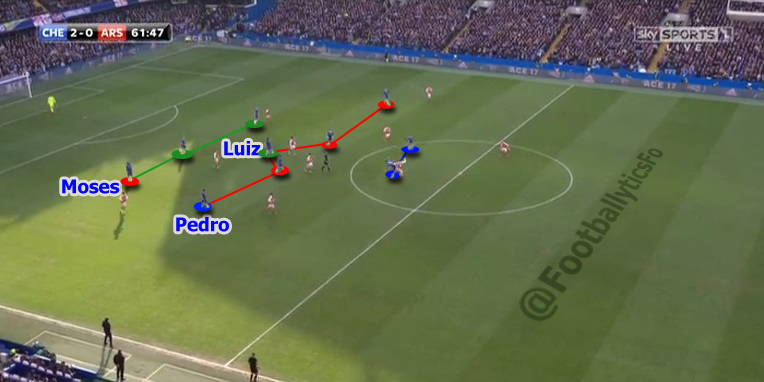
If we take a look again at the same situation we can see another feature of Conte’s team. David Luiz has stepped up into the midfield to make a clearance, Moses recognized it and didn’t run forward to his “normal” position at the right wing. The same process went on with Pedro who held back his run forward in order to keep the team shape intact. This might be a small adjustment but it tells us how well organized Chelsea is. They are very fluid in their movement when situation calls for it and in few seconds a third of a team change their lines but the team overall organization remains intact.
This kind of concentration in defence gives confidence to two forward players who can then be fully creative and free to play to their instincts. In the end, Hazard scores a wonder goal few moments later.
To conclude, Chelsea wins again due to their impeccable team performance while Arsenal crushes under the pressure unable to create anything substantial while the game was still in their reach. Without the patience to shift Chelsea around and organize slowly they pushed forward in numbers disregarding the counter attack threat. This in the end only helped Chelsea to achieve one of the easiest wins this year.
While the difference in individual quality between two London teams isn’t so great, the difference in team organization, ideas of how to break the opposition and concentration to stick to the plan shows who is really the team and who is much less so at the moment.




